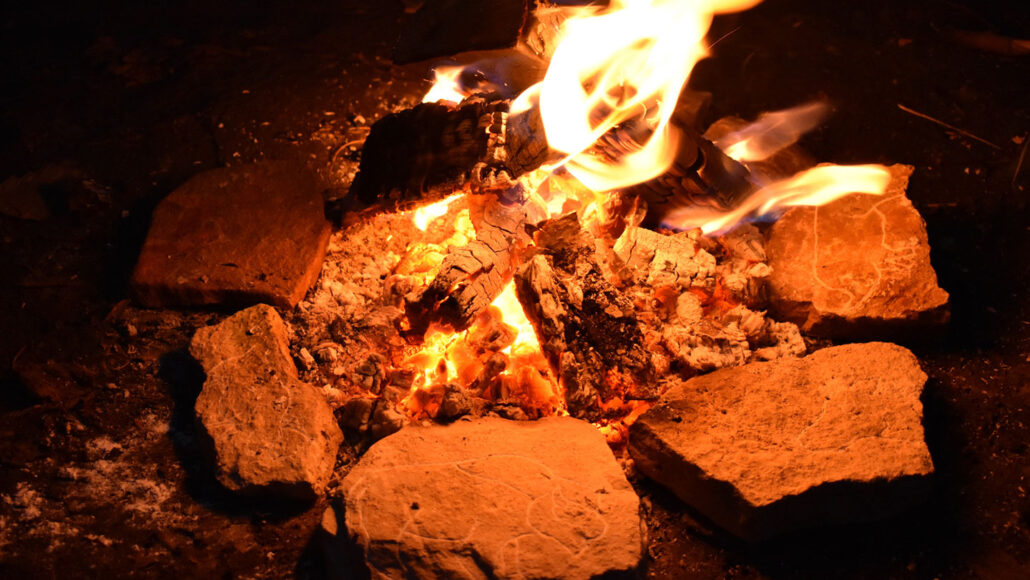Prehistoric people may have used light from fires to create dynamic art
When brought near flickering flames, stone engravings of animals seem to move

Replicas of stones featuring animal engravings, which were excavated in southern France, are shown positioned around a fire. Researchers think prehistoric people would have placed them this way so flickering flames would create the illusion of moving images. A. NEEDHAM ET AL/PLOS ONE 2022 (CC-BY 4.0)
By Allison Gasparini
Prehistoric people may have used firelight to create the illusion of movement in their art.
An analysis of 50 engraved stones excavated in France suggests that when the stones were placed near a fire, the flickering light made the engraved animals seem to move, researchers report April 20 in PLOS ONE.
These stones, or “plaquettes,” were found in the 1860s in a rock-shelter called Montastruc, and are engraved with animals such as horses, ibex and deer. The site was used by Magdalenian people, hunter-gatherers who inhabited the area between 23,000 and 14,000 years ago.
The researchers analyzed heat damage on the stones, which was indicative of them being directly exposed to high temperatures for a prolonged period, and created 3-D models of the plaquettes. Those models were imported to a virtual reality software where they were placed next to a virtual hearth so that the areas of heat damage were closest to the flames, mimicking how the stones may have been placed in real life. The researchers then observed the visual effects of the virtual reality light.
It was surprising to see how dynamic the art was and “how changed your experience of the art was by a simple thing, just putting it close to a fire,” says Andy Needham, an archaeologist at the University of York in England. The work suggests that the artists purposely engraved along the contours of the rock to influence viewers to see meaningful movement through the random pattern of firelight, he says.
The finding adds to archaeologists’ understandings of the relationship between early people’s artwork and fire. Another recent study found that Stone Age humans created “hidden” art in dark caves which could be illuminated and made visible only with the help of the right lighting (SN: 7/6/21).
CITATIONS
A. Needham et al. Art by firelight? Using experimental and digital techniques to explore Magdalenian engraved plaquette use at Montastruc (France). PLOS ONE. Published online April 20, 2022. doi: 10.1371/journal.pone.0266146.
No comments:
Post a Comment